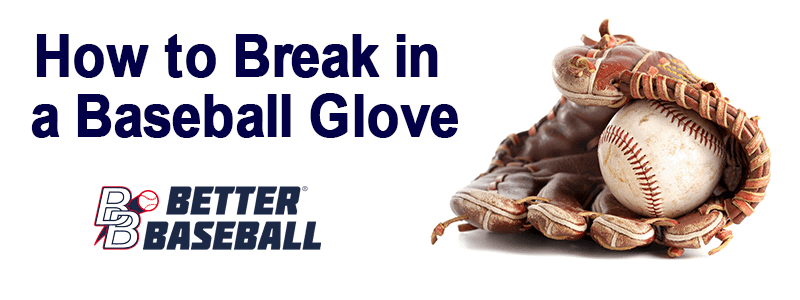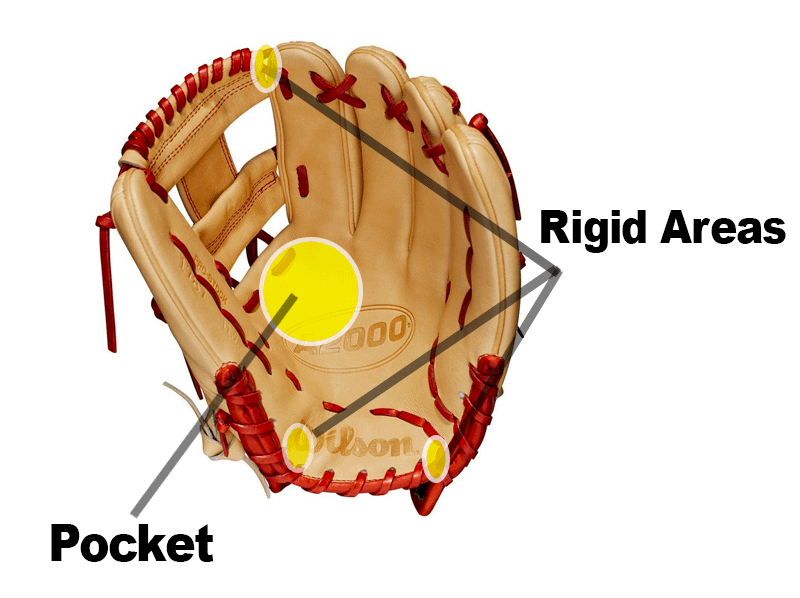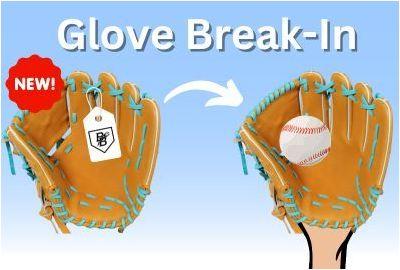
One of the most common questions we get at Better Baseball is, how do I break in my new baseball or softball glove? If do you a quick search of the internet you will see a wide variety of options and techniques, some of which are actually counter intuitive to your break in process and some can even actually damage your glove if done incorrectly. In this post we will break down the best, quickest and safest ways to break in your glove to insure it has a custom fit and feel for your next game.
Once you have purchased a new glove wether if it’s a top of the line Wilson A2K or a beginner Mizuno Power Close, you want to make sure that glove is fully broken in to your hand before you step on the field for your next game. Let’s take a look at some of the best options and techniques for breaking in your new baseball or softball mitt.
Safest and Easiest Method
The easiest and most fail safe way of breaking in a new glove is to wear it and play catch as much as possible. Even if you are throwing a ball back and forth while you’re watching TV or playing catch in the the backyard, you are helping that leather stretch to fit to your hand. Try to concentrate on the “pocket” of the mitt. Usually the pocket is formed on the palm between the thumb and index finger of the glove slightly below the webbing. Most gloves vary in terms of break in times, but if you follow these techniques your glove should be game ready in about 1-2 weeks.

Pro Tip: Every hand shape is different, so make sure the person using the glove in the field is the one who is breaking it in.
Using a glove mallet will also help. Focus hitting the pocket with the mallet and also concentrate on breaking in the rigid parts of the glove as shown in the picture below. Once these areas are stretched and formed the glove will naturally start breaking in the more you use it. When you are not using the glove, place a baseball in the pocket and wrap it with a band or a belt.

Pro Tip: Wrap the glove in the same way you are closing it.
One of the biggest mistakes we see during the break in process, is some people wrap the glove so tight or fold the glove up then wrap it. If you are closing the glove with two fingers in the pinky slot, have a “flare” style or traditional grip, you want to wrap the glove accordingly. Placing a ball in the pocket before wrapping it will ensure that pocket will hold this shape during the break in process. Even after the glove is broken in, we highly recommend you wrap the glove with a ball in the pocket to maintain its proper shape when you are not using it. When storing your glove, try and find a dry area that is around room temperature. Do not store your glove in a car or garage as moisture levels and heat could damage the leather.
Advanced Methods
For most youth gloves 10 and under, you really don’t need to condition the glove with oil to help with the break in process. For some of the high end models though glove oil can help with pocket development and breaking it in. Keep in mind less is more with glove oil. Too much glove oil or conditioner will weigh down the glove. The best way to apply glove oil is to first put the oil on a rag and wipe it in on the pocket and on the rigid points as mentioned before. For the break in you do not need to cover the whole glove with oil, just the break in points. After the season, to keep the glove in good condition you can apply oil to the whole glove to keep it feeling new. With leather, if it dries out, it will crack and break. Oil and conditioners prevents this from happening.
Glove Steaming
Did you know most glove manufacturers actually recommend not steaming their gloves? Over steaming could lead to laces to snap and could damage the leather if not done properly. If you have time before your next game or practice we actually recommend not steaming your mitt as well, especially for the top tier gloves. High quality leather mitts will most likely take the the most time during the break in process. Playing catch remains the best way to safely ensure your glove or mitt gets broken in correctly. At Better Baseball we only recommend steaming if you are in a severe time crunch or have very stiff or rigid glove that needs some professional help to get the glove broken in. Done properly, steaming makes the leather more malleable which helps with shaping the glove to your hand. Our glove care specialist have years of experience with glove steaming and know the right time intervals, temperatures and procedures to make sure the leather of your glove remains safe. Steaming your glove at home could lead to various problems down the road, and we highly recommend you consult with our glove care experts before you start your own process.
The DON’TS of breaking in a glove.
DON’T use any heat treatment like a microwave or oven. The high heat might make the glove feel broken in, but usually the leather and laces of the glove will be damaged and cut the life of the glove in half.
DON’T use any non approved oil or substance to help with your glove process. We have seen it all from shaving cream to lighter fluid. We sell all types of glove leather approved oils for you to use.
DON’T try the water or “Aso” method for breaking your glove in. It really is only done on the professional side and will shorten the life span of your glove. Pro ball players get their gloves for free and don’t have any interest in longevity of their mitts. Although this process breaks in a mitt quickly, there are so many things that can go wrong with this complicated technique that’s we do not recommend this unless you are a professional. Every glove and mitt has its own special way to break in for this process and it is extremely difficult to get the right result with out damaging or soaking your glove with water.
DON’T run over your glove with a car or store your glove under a bed mattress to break it in. A lot of times the weight is too much and could break in the glove incorrectly or damage the leather long term.
DON'T store your glove in a car or garage. Moisture or heat can damage the leather and shorten your glove's lifespan.
Points of Emphasis
- The best and safest way to break in your glove is to play catch as much as possible.
- When not using your glove, wrap the glove with a ball in the pocket as you would close your glove.
- Too much glove oil can weigh down your glove and can be counter intuitive to your beak in.
- Focus the glove oil on the pocket and rigid zones during the break in process with a rag.
- At the end of the season apply a small of amount of glove oil to condition your glove.
- Top tier gloves and high quality leather mitts will take the longest to break in, so be patient.
- Youth gloves usually don’t need glove oil or steaming.
- For glove safe keeping, we highly recommend the Better Baseball Glove Bag. A water resitant bag that will keep your glove in shape.
- If still unsure, do not hesitate to email or ask one of our glove care specialist on the best ways to break in your glove.

